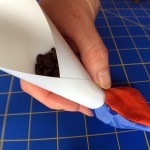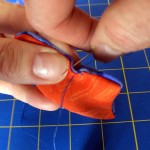
Last week I promised to delve more into Accelerated Learning, so I am making good on that promise. I am currently reading the book The Accelerated Learning Handbook by Dave Meier. In the book it lists these five things as the “major principles of accelerated learning:
- Total learner involvement enhances learning.
- Learning is not the passive storage of information but the active creation of knowledge.
- Collaboration among learners greatly enhances learning.
- Activity-centered learning events are often superior to presentation-centered ones.
- Activity-centered learning events can be designed in a fraction of the time it takes to design presentation-centered ones.”
Accelerated Learning is not a step-by-step approach like some instructional methods. It encourages trying different methods, techniques, and media to find what works and use them. Then keep trying more to find what works best. I like this approach because it fits with one of my core beliefs (and is part of my company’s vision) to “learn always.” Things change, people change, times change. What works today may fall flat tomorrow. Try new things to keep those brain juices flowing.
I will continue posting additional tidbits about Accelerated Learning as I read the book, and I will leave you with instructions for my Wake-up Bag. The Wake-up Bag is an element of Accelerated Learning by “waking up” the senses, making participants alert and engaged. I recently used them during a presentation on Technical Writing. Everyone loved them and they stayed energized the entire hour session of learning how to write in Simplified Technical English! I know! Amazing, right?!

- Participants earn a Wake-up Bag by participating – asking or answering questions, sharing experience, etc.
- The bright colors wake-up the eyes.
- The squishiness wakes-up touch.
- The sound of the beans wakes-up the ears.
- The smell of the coffee beans wakes up the nose and triggers the brain to wake up (true story, check it out on “WebMD – Coffee’s Aroma Stirs the Brain”).
Here’s how I made them.
- Purchase material in bright colors. I bought four fat-quarters (pre-cut material measuring 18” x 22”), which was enough to make 54 bags.
- Purchase coffee beans. You don’t need to buy the expensive stuff. The cheaper beans have just as strong of an aroma. I bought a 2lb bag and have plenty leftover.
- Cut the material into 3” x 3” squares. I’m a quilter so I have the fancy cutting board and rotary cutter already available. If you don’t have these items, use a ruler and pen to mark the WRONG side of the fabric in 3” x 3” squares and the cut the material using scissors. (The WRONG side of the fabric is the side that you don’t see when you are done. Typically it is lighter in color than the RIGHT side of the fabric, which is the side you see when done.)
- Put two of the squares together with RIGHT sides facing each other and pin them in the center. This keeps them from moving while you sew.
- Stitch along three sides of the square.
- Stitch on the fourth side so that there is a 1” opening in the center. This is how you will turn the material RIGHT side facing out and fill the bag with beans.
- Snip all four corners being careful not to cut inside the stitches. This makes your corners pointed instead of rounded.
- Turn the bags RIGHT side facing out. I use a crochet hook to help since the opening is small.
- Use a funnel to fill the bag with beans. I made a funnel out of cardboard stock and used between one large handful of beans and two small handfuls of beans to fill the bags. Don’t overstuff them. You want them squishy.
- Use a needle and coordinating thread to stitch the bag closed.
- Have fun and think of creative ways to incorporate the Wake-up Bags into your training.








